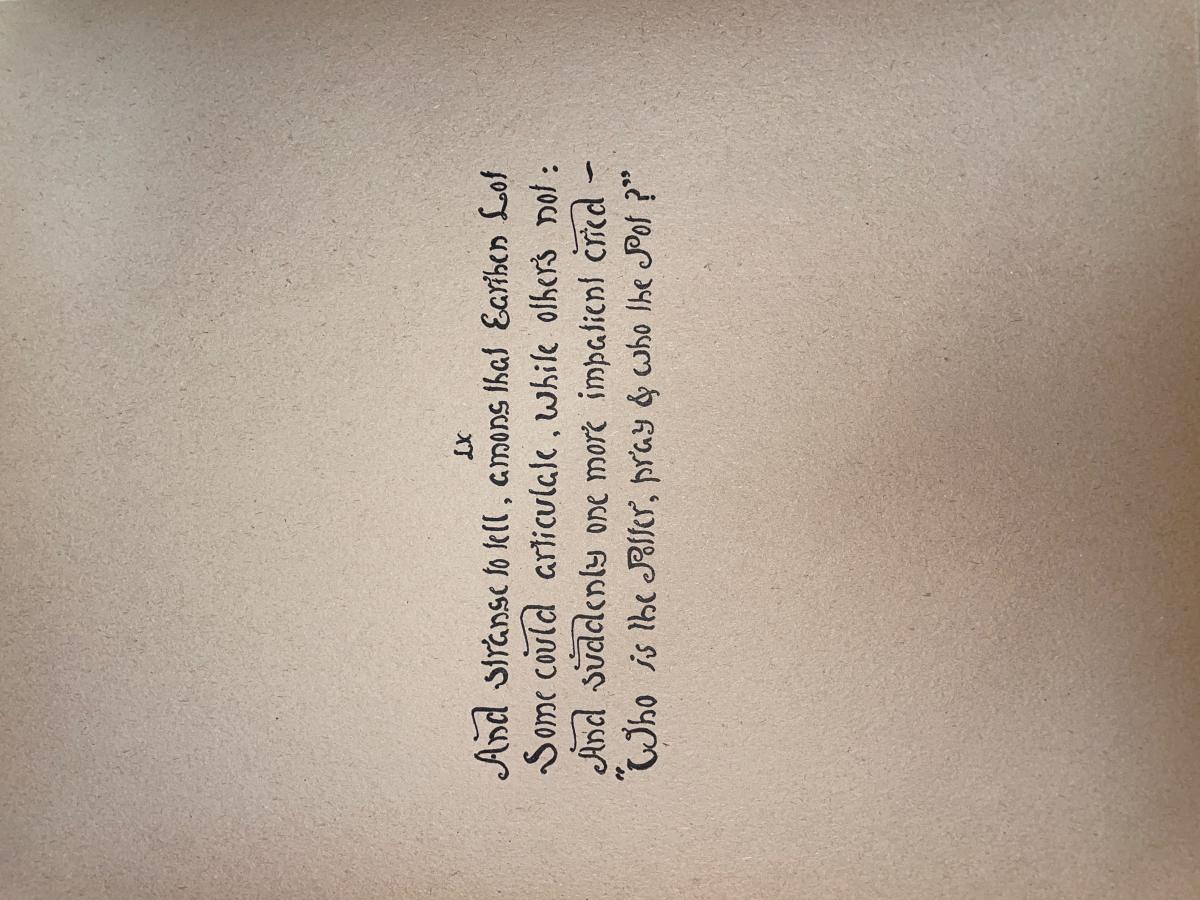Stanza 60 of this version of the Rubáiyát of Omar Khayyám plays a key role in developing one of the central themes of the book which is the mystery of existence and the human longing to understand it. The stanza presents a dramatic moment of awakening: "And strange to tell, among that Earthen Lot / Some could articulate, while others not: / And suddenly one more impatient cried— / 'Who is the Potter, pray, and who the Pot?'" Here, Khayyám uses the metaphor of pots questioning their maker to express the human desire to understand the nature of existence, creation, and purpose. The imagery of some pots speaking while others remain silent suggests the uneven distribution of awareness, voice, or perhaps spiritual insight among people. The phrase "one more impatient cried" gives urgency to this existential plea, emphasizing the emotional intensity behind the need to know: who made us, and why?
The line "Some could articulate, while others not" underscores the diversity of human consciousness. Khayyám does not present a uniform response to the mystery of existence; instead, he shows that some individuals question and rebel, while others remain passive or silent. This contrast invites reflection on why some people seek meaning so fervently while others seem content, or resigned, to accept their fate. The talking pot that demands to know its creator becomes a symbol of the human condition: questioning, longing, perhaps even defiant in its need for answers. Khayyám's tone here is not dogmatic but open-ended, capturing both the absurdity and the profundity of such a quest.
Sett draws out this theme vividly in his depiction of the stanza. In his commentary on the illustration, Sett writes, "The pots are speaking. The dogmatic pot is banging his fists. The argumentative bottle is saying: 'Now let us be logical.' And the feminine jar asks: 'First, tell me, is anyone looking at us?'" Each vessel represents a different human response to existence. The dogmatic pot, with clenched fists, embodies rigid certainty or religious zeal. The argumentative bottle, calling for logic, suggests philosophical rationalism. The feminine jar’s concern about being observed introduces themes of vanity, self-consciousness, or perhaps even social anxiety.
Visually, Sett's illustration complements the stanza's philosophical tension. The pots are not passive objects but expressive characters, each responding to their condition in a unique way. The image literalizes Khayyám's metaphor, allowing viewers to see the pots as stand-ins for human beings—confused, impassioned, divided. This visual interpretation reinforces the poem's existential questions: If we are shaped beings, what are we shaped for? And who, if anyone, is looking at us?
Together, the stanza and the image explore the tension between silence and articulation, between passive acceptance and passionate inquiry. They invite readers not just to ponder the identity of the Potter, but to examine their own responses to that eternal question. Khayyám and Sett, through their respective mediums, illuminate the paradox of human consciousness: the simultaneous desire to know and the painful recognition that ultimate knowledge may forever elude us.


